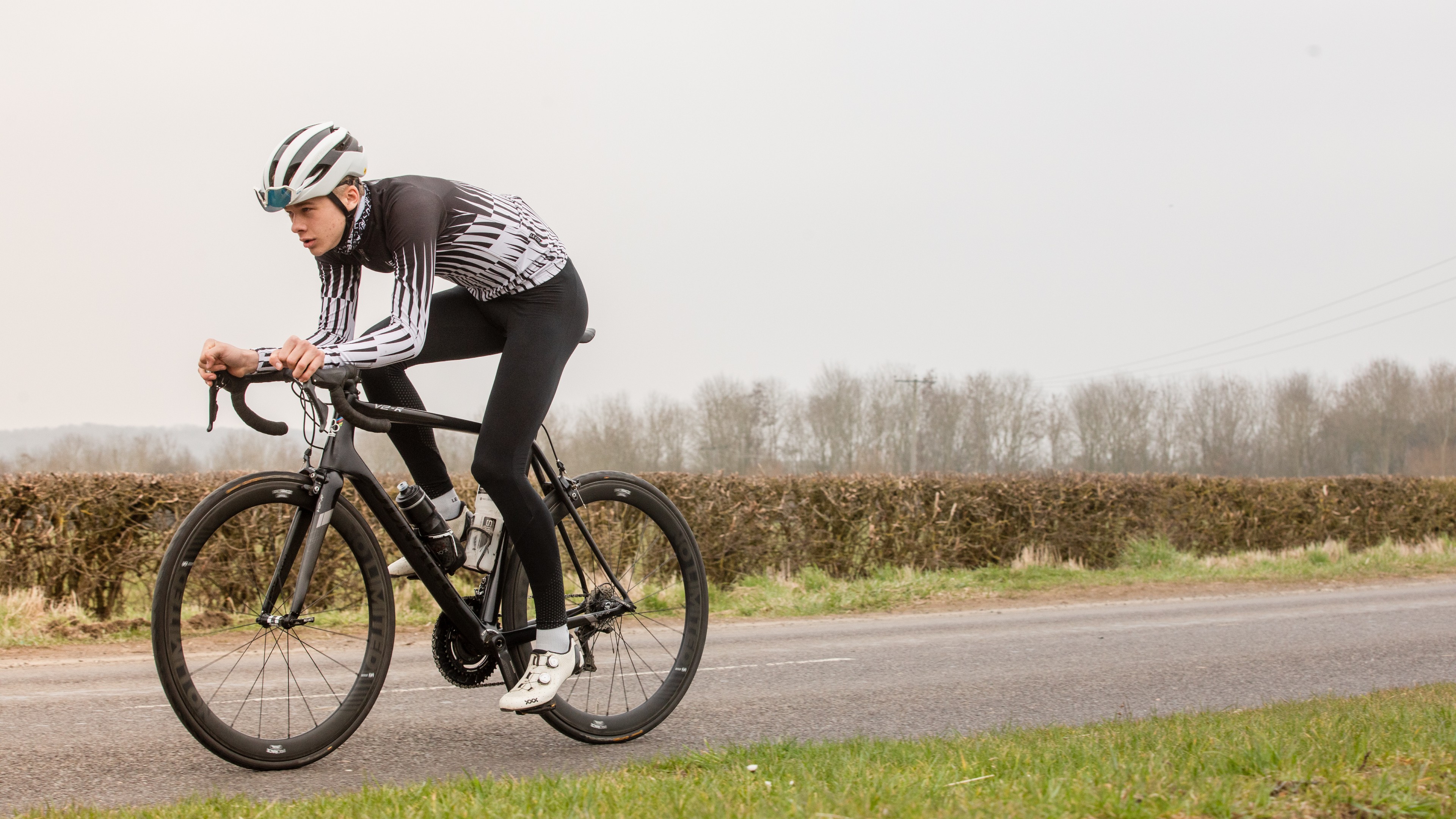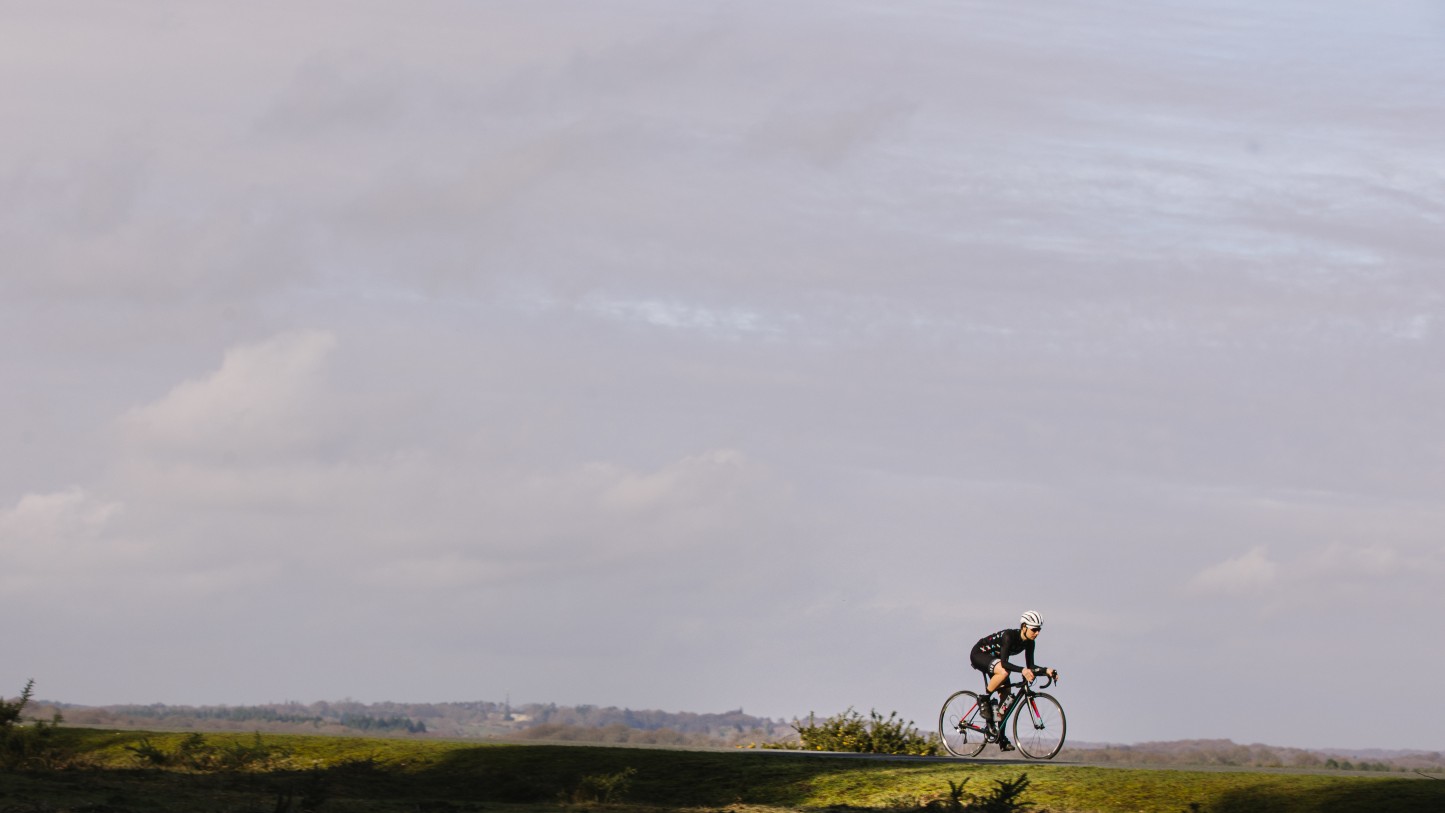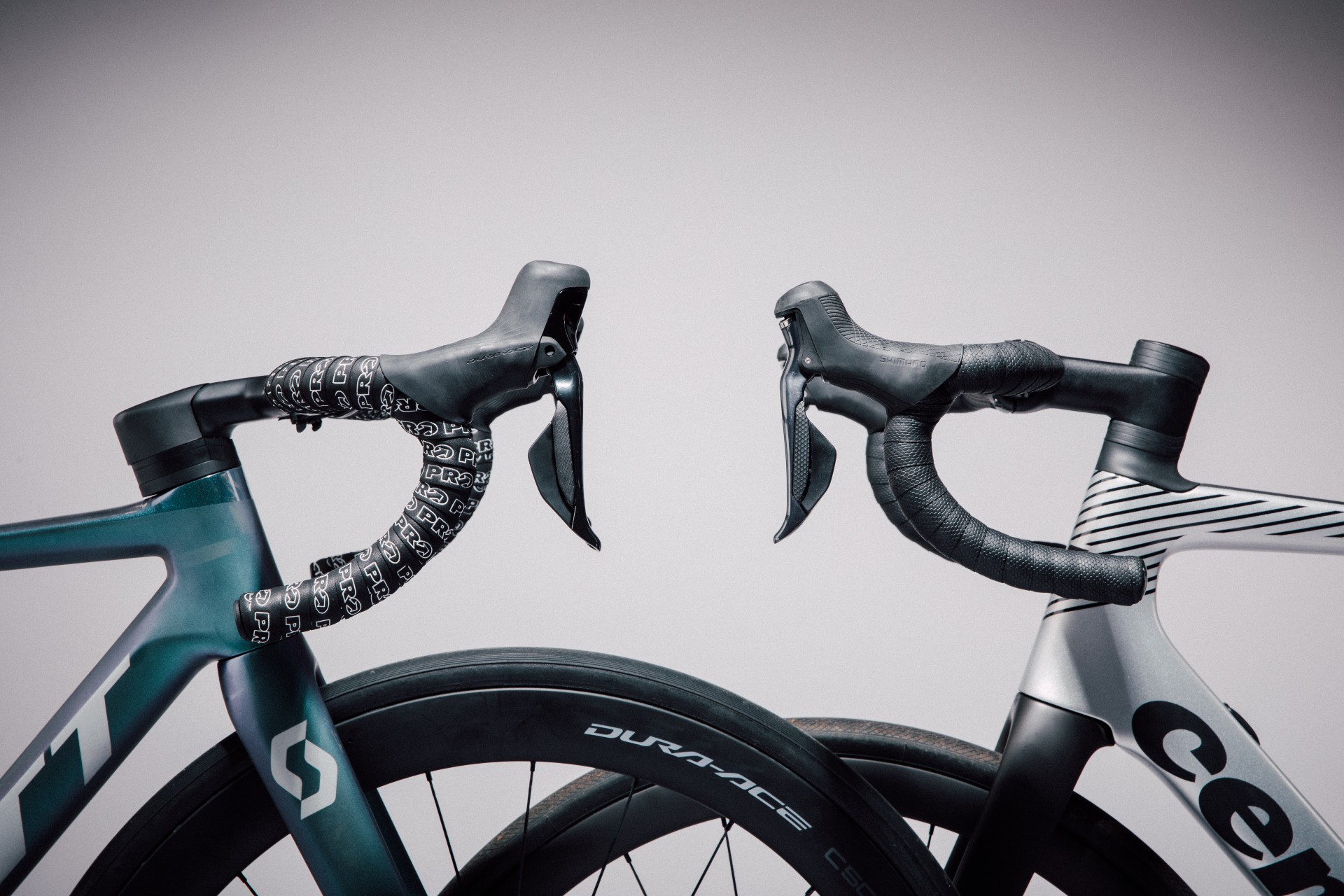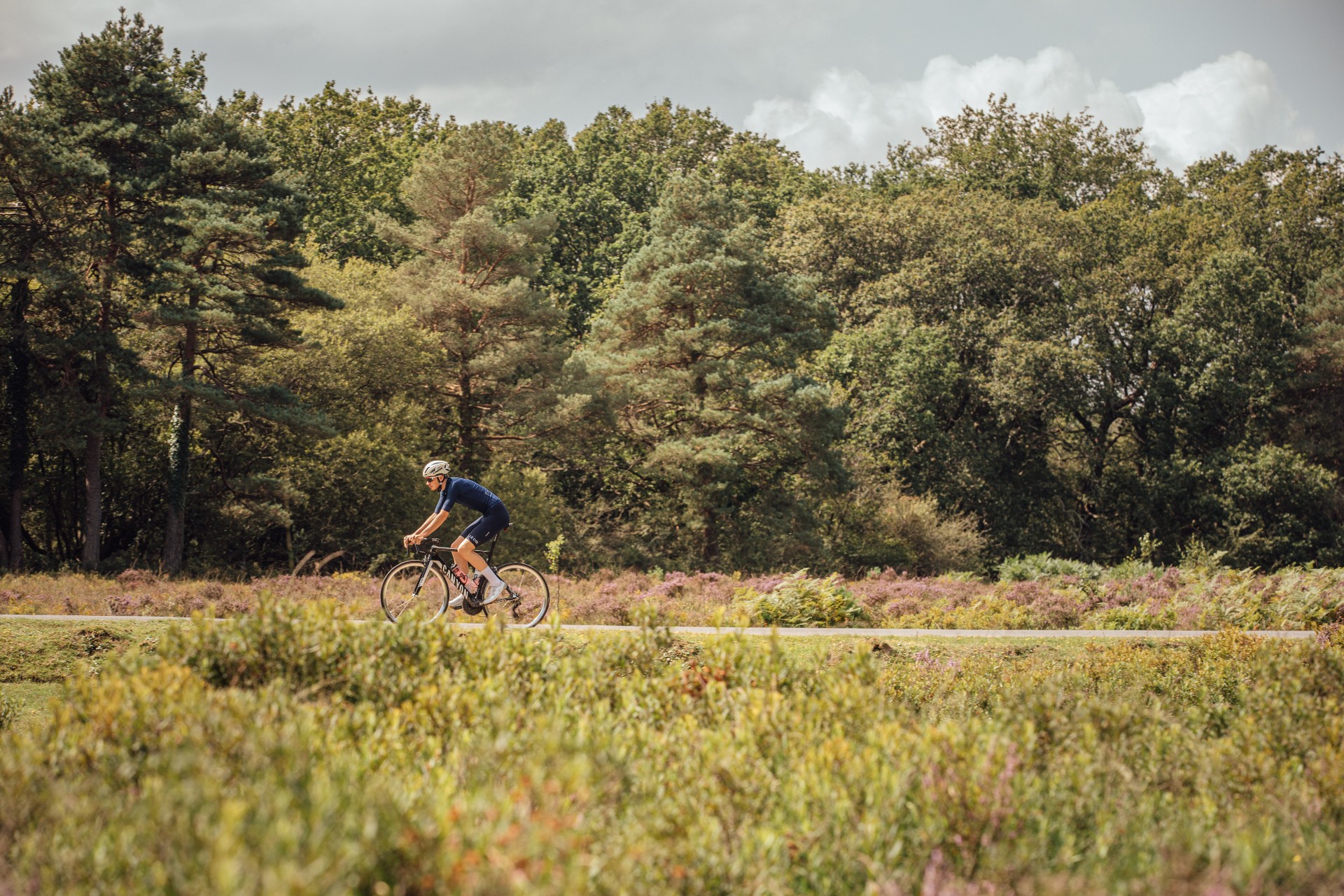How to combat neck pain caused by cycling
Physiotherapist and competitive cyclist Nicole Oh explains how you can manage and avoid neck pain after long rides

While neck pain is a common occurrence for recreational cyclists, it needn’t be.
Even if you’ve spent a good few hours in the saddle over the weekend, a sore neck, and perhaps some back pain too, don’t have to be the aftermath. If you assume that neck issues are just the reality of riding a road bike and of attaining an aerodynamically efficient position, then think again.
Dialing in your bike fit will help you to attain a more neutral spine position, which puts far less stress on your body. Combine this with a few exercises to strengthen and stretch the affected areas and you can begin to work towards eliminating neck pain as an unfortunate byproduct of your weekly rides.
What causes neck pain when cycling?

You may notice pain after a long, endurance ride
Neck pain is caused by spending prolonged periods of time in an extended position placing stress on our neck and upper back joints and muscles.
Poking your chin forwards and hyperextending your neck places constant compression on the lower joints of the neck, something that can happen quite easily over the course of an endurance ride. This repetitive stress of the joints causes irritation of the tissue, which can lead to pain and stiffness, inflammation and injury.
Overusing cervical extensors - which hold up your neck against gravity - or putting a sustained stretch on muscles in the back and shoulders (such as the upper trapezius, levator scapulae or rhomboid muscles) can lead to painful fatigue of these muscles.
When a muscle undergoes sustained contraction or tension for a long period of time, the circulation of blood into the muscle becomes compromised due to pressure on the small blood vessels. The muscles are starved of oxygen and nutrients while being asked to undertake a continual workload, which can lead to painful muscle spasms and trigger points.
The latest race content, interviews, features, reviews and expert buying guides, direct to your inbox!
Poor posture is a major contributor to neck pain whilst cycling. Individual factors such as weak neck extensors, stiffness in the upper part of your spine, and poor core stability will affect your ability to hold a good posture. If you are unaware of your posture or position and are unable to recruit/activate the muscles required to put you in a more ideal one, it will be difficult to correct. So, how can we make an optimum position unconscious? The answer is a good bike fit.
When everything on the bike is in the correct position, a neutral spine posture - which puts the least stress on your joints, allowing the most efficient amount of muscle work - should be more natural and effortless.
Common bike fit errors related to neck pain

Handlebar reach and drop are the key metrics to look at
The most crucial aspect of bike fit in relation to preventing neck pain is handlebar position and set up, with the two most common issues being excessive drop and excessive reach. Both of these can force you to crane your neck into a hyperextended position, which is exacerbated when riding in the drops, or on TT bars.
Whilst the main area of concern is usually the front end set up, it cannot be considered independent of the set up as a whole.
For instance, a saddle tilted too nose down can cause you to slide forward on your saddle and place more weight on your hands as you try to support yourself. A saddle placed too far forward can change the weight balance of the bike and overload the front, again putting more weight on your hands. Conversely, having a saddle tilted nose up can push your pelvis into posterior tilt (ie. sitting on your tailbone) which can increase spinal flexion causing you to over-reach to access the hoods.
A clinical bike fit carried out by a professional can help to identify these common pitfalls - but the first areas to look at are the reach and height of your handlebars.
Adjusting handlebar reach to combat neck pain

The length of the stem, the handlebar itself and the lever all play a part
A rider’s ‘reach’ is defined by the distance from the centre of their saddle, to the tip of the shifter lever. You can tell if you are over-reaching if you find you instinctively hold the bars short of the hoods, or get upper limb discomfort such as neck and shoulder pain. There are several components that can be adjusted to shorten the reach if you need to.
- Shortening the stem: This is the first go-to method. However, an excessively short stem may make the steering twitchy, so your confidence in handling the bike needs to be considered - stem length is proportional to top tube length, but on a road bike, we’d avoid anything less than 70mm
- Narrowing the handlebars: Many bikes come specced with standard handlebar widths, the ideal width for you matches the two bony protrusions on the outside of your shoulders - measure this distance, and aim for bars that match - this will put your shoulders in a more natural position.
- The reach of the actual handlebars should also be considered and is often overlooked; it usually ranges from 70-100mm, which is a difference of 30mm, over a whole bike size just in the type of handlebars you choose! That's why it's best to measure reach from the centre of the saddle (where you sit) to the tip of the lever (where you'll place your hand) when comparing bikes ahead of a purchase, as geometry charts won't take this difference into account.
- The position the hoods are placed on the handlebars: High position gives a shorter reach, and a slight upward tilt can make the reach feel shorter. However, you should also ensure that the levers can still be accessed in the drops, which may require the handlebars to be rolled down.
- Finally, the type of braking system on your bike can affect reach, with disc brake hoods generally being longer than rim brake hoods. Whilst this is not practical to change, it should be considered in the overall reach of the bike when setting it up.
Adjusting handlebar height to combat neck pain

If your stem is in its lowest position, and the steerer isn't cut, that leaves loads of space to raise the bars
Raising the height of the handlebars will mean less neck extension is required to have a good view of the road. However, decreasing the drop significantly will also alter the position of your body altering your pedal stroke, particularly how you recruit those all important glute muscles, so this may need to be considered.
If you have a few spacers on top of your stem, adjusting the bar height is as simple as moving these below the stem. Whilst you may have been told this is not as fast, due to being less aerodynamic, remember that a strong and stable position that you can hold without injury will ultimately be faster.
On bikes where all the spacers are already underneath the stem, it will not be possible to raise the handlebars further; the only option is to invert the stem to a positive rise, this isn’t always an option and can impact bike handling. If you are unable to raise the front end as much as you require, it may be because the bike you are riding is not the correct size or geometry for you. If the steerer has already been cut, you could overcome this by purchasing a new fork unit.
Self-management for neck pain from cycling

Consciously relaxing your shoulders as you ride can go a long way to combatting neck pain
Assuming that your bike is set up well, here are some simple tips to alleviate neck pain whilst riding:
- Relax your shoulders; think about creating a space between your shoulders and your ears.
- Unlock your elbows, allowing a slight bend in your elbows to act as shock absorbers, so that road impact is not sent straight up to your neck and shoulders.
- Change your hand position regularly to offload joints and reduce muscle fatigue.
- Regularly stretch your neck during more relaxed parts of your ride.
One of the quickest ways to become injured is to do too much, too soon. Whenever you increase volume, do so gradually to allow your body to become accustomed to new demands.
There are some exercises you can perform to combat neck pain. A physiotherapist or clinical pilates instructor can demonstrate these for you, which will help to ensure you’re performing them correctly. I would advise postural exercises for scapular retractors, and especially lower trapezius activation, which can minimise neck problems, such as neck retraction, angel wings, and chariot pull.
Poor core stability, resulting in an inability to hold your trunk and spine in a good position, can put extra weight on your hands, and a rounded spine posture can force you to overreach and overextend your neck. Therefore, lower/deep abdominal activation which can help you to create a more stable core, including exercises such as Superman, dynamic planks, Jacknife and hip hinging exercises such as straight leg deadlifts and bent over rows.
Finally, stretching your upper back (eg. extension over a foam roller - which is demonstrated here) can decrease the stress at the base of your neck.
The final say on neck pain and cycling
The road bike position can be stressful on the joints and muscles of our necks. The best way to minimise this stress is to ensure your bike is set up correctly and in a position that your body can tolerate. Often this will mean decreasing the reach and/or drop of your handlebars in relation to your saddle, although the set up of the bike as a whole needs to be considered. You can also work on your postural muscles that hold not only your neck, but your whole spine in a neutral position, as well as the mobility of your neck and upper back. Furthermore, minimising overload by gradually increasing the time on your bike will help your body adapt to your riding position.
Nicole Oh is a physiotherapist and bike fitter, with training in biomechanical assessments, sports injury rehabilitation, acupuncture and clinical pilates.
A competitive cyclist with a background in triathlon, Nicole raced at National level in the UK, also managing and co-founding the Les Filles Racing Team. Having moved to Sydney, she works as a physiotherapist at The Body Mechanic and continues to race competitively.